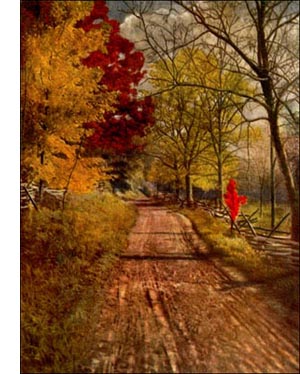Swamp Cottonwood Poplar Tree
 Swamp Cottonwood (Populus heterophylla, Linn.)-Roundtopped tree, 50 to 90 feet high. Bark red-brown, in narrow, loose plates; twigs red or grey, containing orange pith. Wood brown, light, compact. Buds resinous, ovate, with red scales. Leaves broadly ovate, 4 to 7 inches long, serrate, dark green with pale lining, when mature, covered with white tomentum as they unfold; petioles round, slender; yellow or brown in autumn. Flowers, March or April; staminate aments crowded, erect until blossoms open; anthers deep red; pistillate aments few-flowered, drooping. Fruit, May, aments 4 to 6 inches long; capsules few, 2 to 3-valved, 1/2 inch long, bell shaped. Preferred habitat, wet soil. Distribution, swamps from southern Connecticut to Georgia and Louisiana; north along Mississippi to Arkansas and Indiana.
Swamp Cottonwood (Populus heterophylla, Linn.)-Roundtopped tree, 50 to 90 feet high. Bark red-brown, in narrow, loose plates; twigs red or grey, containing orange pith. Wood brown, light, compact. Buds resinous, ovate, with red scales. Leaves broadly ovate, 4 to 7 inches long, serrate, dark green with pale lining, when mature, covered with white tomentum as they unfold; petioles round, slender; yellow or brown in autumn. Flowers, March or April; staminate aments crowded, erect until blossoms open; anthers deep red; pistillate aments few-flowered, drooping. Fruit, May, aments 4 to 6 inches long; capsules few, 2 to 3-valved, 1/2 inch long, bell shaped. Preferred habitat, wet soil. Distribution, swamps from southern Connecticut to Georgia and Louisiana; north along Mississippi to Arkansas and Indiana.The swamp cottonwood is variable in the base, apex and margin of its leaf. It may exhibit coarse or fine saw teeth, a blunt or sharp-pointed apex, a square or heart-shaped base. The conspicuous netted veins are always present, and the leaves are always large and broadly ovate, with slim, round petioles. The orange-coloured pith of the branchlets best distinguishes the tree from other poplars. The new shoots and the unfolding leaves are coated with white down. It often takes a whole summer to get rid of it.
The Acadians (probably) are responsible for the name langues de femmes, by which the tree is known in Louisiana. The mild calumny of Gerarde is thus perpetuated and extended to a species whose leaf stems are merely flexible, not flat at all! In the lumber trade the wood is known as "black poplar." It is dark brown in colour.